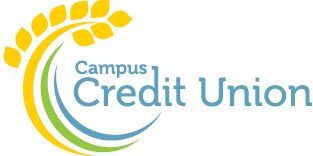REMEMBER: Campus Credit Union will never initiate contact and ask for your online and mobile banking credentials, including your usernames, passwords, and security codes.
Email Phishing
Email phishing enables offenders to obtain personal information via email and the internet. With phishing, an email header is forged to make it appear as if it came from someone else other than the actual source. The fraudulent email message may direct you to a “spoofed” website that looks like the legitimate source’s website but isn’t. In these cases, the email or pop-up messages are used to deceive you into disclosing sensitive personal information so that the offender may use your information to make fraudulent purchases, access your accounts or steal your identity.
Telephone Phishing
Telephone phishing enables offenders to obtain personal information via telephone. Usually, offenders gather bits of information in advance to use along with the information that you provide over the phone, as a means to complete the information for your account. With full account data, the offender can easily make fraudulent transactions.
In some cases of phone phishing, the offenders send you a fraudulent email that appears to be from a legitimate financial or government source, but isn’t. The email claims that your accounts have been deactivated due to fraudulent activity and requests that you call a specific phone number in the email to reactivate the accounts. When you call the phone number, a friendly voice message claiming to be a financial institution prompts you to disclose sensitive information. In other cases of phone phishing, offenders are able to spoof caller ID, so that their call appears to be from a legitimate bank, but isn’t. It’s during the call that you’re prompted to disclose the sensitive information to complete your account data.
Text Phishing
Text phishing occurs when offenders send you a text message in an attempt to coerce you into providing personal information. The text message claims that your account has been deactivated, and requests that you call a specific phone number in the text message to reactivate the account. You will then be prompted via automated message to provide your account information. Offenders will use your account information to make fraudulent transactions.
Identity Theft
Identity theft occurs when your personal information is used by someone else to open new accounts or initiate transactions in your name. Identity theft occurs through a number of ways offline; stolen wallets and purses, intercepting and rerouting mail or rummaging through garbage. To learn more, visit www.consumer.gov/idtheft, the U.S. Governments’ central website for information about identity theft, or call the Identity Theft hotline at 1-877-IDTHEFT.
Fake Check Scams
Fake check scams occur when you receive a realistic looking phony check and don’t discover that it’s fake until after depositing it, and sometimes wiring money back to the offender. Usually the scams start with someone offering to:
- Buy something you advertised for sale
- Pay you to work from home
- Give you an “advance” on a sweepstakes you’ve won
- Give you the first installment on the millions you’ll receive for agreeing to transfer money in a foreign country to your bank account for safekeeping
Skimming
Skimming, which occurs when your credit or debit card account information is captured in a data storage device, is a practice offenders employ to create counterfeit credit or debit cards from your account information. Your card may be swiped first for an actual purchase then swiped again into a handheld device called a skimmer, or a skimmer may be attached to an ATM machine or unattended gas pump where you swipe your card or enter your card information.
